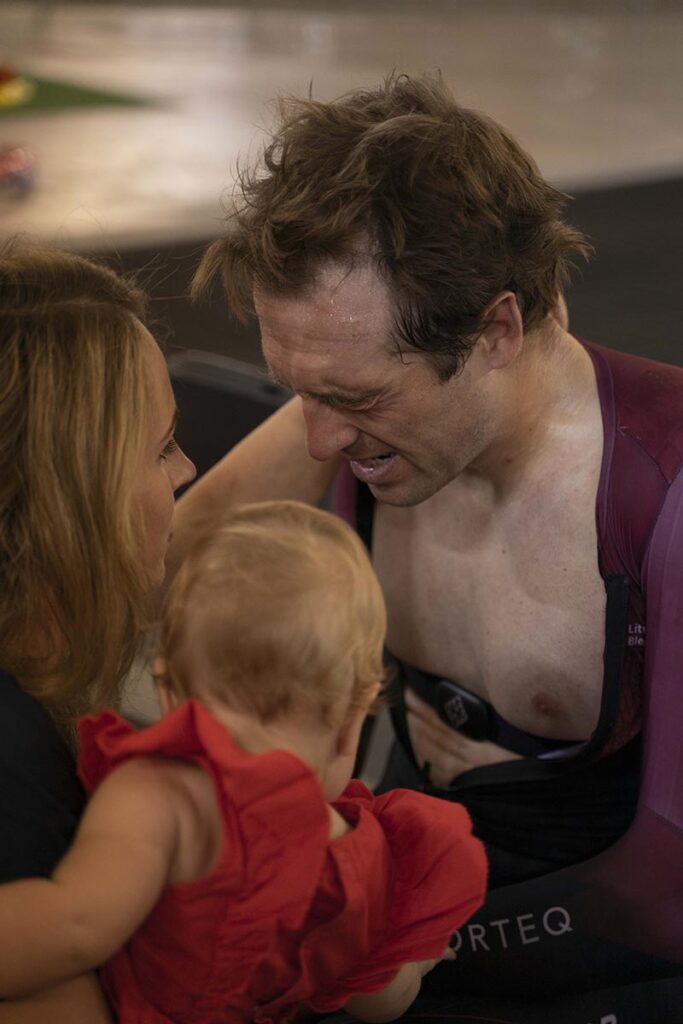Words by William Fotheringham | Photo by Jesús González
Tuning in to watch Alex Dowsett’s Hour Record attempt last night was the opposite of déjà vu. In 2015, when I schlepped across the Pennines from the inaugural Tour de Yorkshire to watch the Essex racer take on cycling’s Blue Riband in Manchester, what was on show was a seamless ride into the record books which Dowsett later described as “easy”, in front of a crowd which I described as “not capacity but filling the home straight and track centre.”
Aguascalientes was very different, the track empty and Dowsett down. I switched on after 20 minutes, and watched as he slipped from 2sec behind the time he needed to 3sec, in the space of a few minutes. It wasn’t much, but it felt definitive even at that point, because in an Hour Record attempt, momentum is everything. Slip off the desired pace, and it’s hellishly difficult to retrieve the ground that has drifted away.
Dowsett was actually well down in the early stages of his 2015 attempt on Rohan Dennis’s distance of 52.491km, but that was planned: the mercurial Australian had made the classic Hour Record mistake of setting off far too fast and dying a horrible death in the final 20 minutes. The Eddy Merckx way of doing it. In Aguascalientes, on the other hand, there was no way back.
But here’s the rub. If the Hour Record was a straightforward thing to do, everyone would do it. It looks so seamless when you watch a racer like Dowsett or Chris Boardman or Sir Bradley Wiggins sitting there like a metronome on two wheels, knocking out the perfect pace with the timing board ticking over just as scheduled. In fact, as history shows, an Hour Record rider is right on the edge, and as aerodynamics have sent the distance of the Record higher and higher, that edge has become ever narrower and harder to stay on.
Dowsett’s solitude in Aguascalientes summed another of the Hour’s great qualities: the sheer loneliness of the cyclist on the track. There is nowhere to hide in that world of pain. The Hour Record rider is brutally exposed in a zero-sum exercise. There are no nuances here; lessons can be learned but the outcome is either success or failure.
There is nowhere to hide in that world of pain. The Hour Record rider is brutally exposed in a zero-sum exercise. There are no nuances here; lessons can be learned but the outcome is either success or failure.

The Hour is not like a road race or a bunched event on the track where not winning is a shared experience between many also-rans. Moreover, that defeat doesn’t happen in the blink of an eye as is mostly the case. It was clear Dowsett was not going to win his very personal battle from maybe 20 minutes to go, but he had no option other than carry on in front of the eyes of the world. That in itself takes a particular kind of courage, which is why each Hour is special.
It’s also, I suspect, one reason why so few of the best cyclists in the world have been willing to take it on. Since Merckx, Indurain and Wiggins have been the only Tour de France winners to have a go. In Wiggins’s case, the attempt was a no-brainer given that the UCI had opened the door for attempts using aerodynamic aids in 2014 after their attempt to put the clock back to the Merckx years in 2000 had come close to destroying the record altogether.
The risk of failure in such a very public arena, as well as the logistical challenges in pulling a record attempt together, have proved a deterrent for champion after champion – LeMond, Hinault, Cancellara – and while the likes of Primoz Roglic, Wout van Aert or Filippo Ganna would surely stand a chance of beating Victor Campenaerts’ distance, only Ganna can take the risk of disrupting his road racing season in order to make an attempt. The others can be forgiven for looking at Dowsett’s unsuccessful attempt and shaking their heads when calculating obvious risk versus potential reward.
The Hour is not for everyone, even the specialists. Argubly the greatest time triallist of them all, Beryl Burton, made several attempts but never managed to overcome the multiple challenges it throws at an athlete; another athlete who, like Dowsett and Campenaerts, marries a bent for time trial and aerodynamics with a road career, Joss Lowden, recently succeeded where Burton fell short.
All that can be said is that these days the Hour most appeals to unconventional champions – Graeme Obree, Boardman and Wiggins being the most obvious examples – but with any luck, Dowsett’s attempt will prompt other specialists to follow suit. On the men’s side Ashton Lambie would be an obvious candidate. Good luck to all of them, because another thing remains true: the Hour is still worth the risk if an athlete is brave enough.
For more reading from the lacourseentete.com team, why not buy our review of the 2021 season, Racing in the Time of the Super Teams, available through here.






